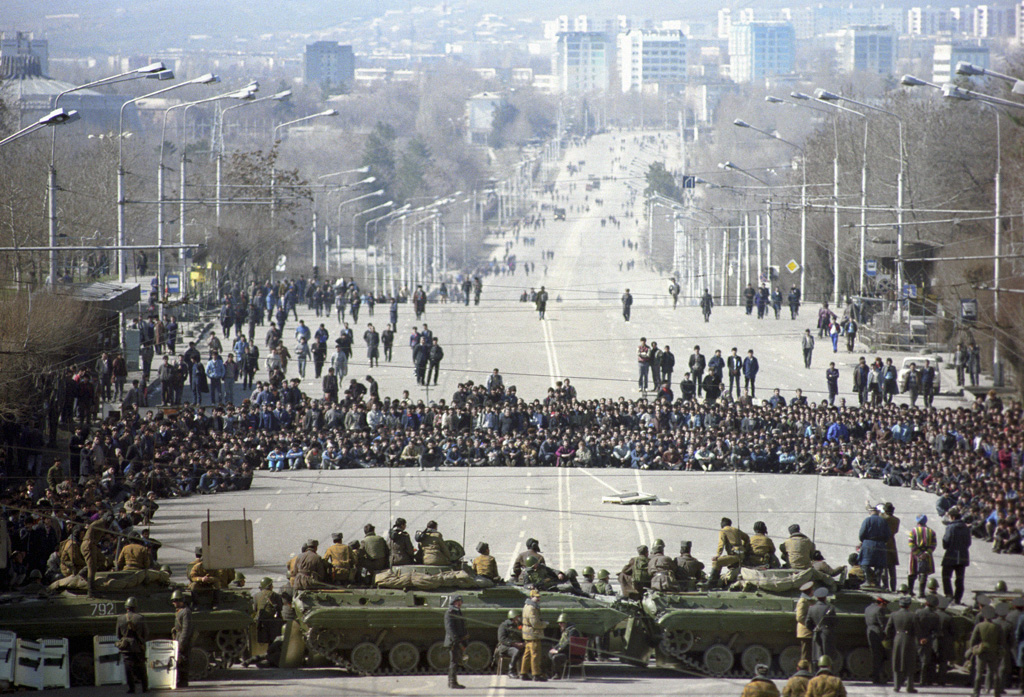|
Tajikistan Civil War
The Tajikistani Civil War ( tg, Ҷанги шаҳрвандии Тоҷикистон, translit=Jangi shahrvandiyi Tojikiston / Çangi shahrvandiji Toçikiston; russian: Гражданская война в Таджикистане), also known as the Tajik Civil War, began in May 1992 when regional groups from the Garm and Gorno-Badakhshan regions of Tajikistan rose up against the newly formed government of President Rahmon Nabiyev, which was dominated by people from the Khujand and Kulob regions. The rebel groups were led by a combination of liberal democratic reformers and Islamists, who would later organize under the banner of the United Tajik Opposition. The government was supported by Russian military and border guards. The main zone of conflict was in the country's south, although disturbances occurred nationwide. The civil war was at its peak during its first year and continued for five years, devastating the country. An estimated 20,000 to 150,000 people were killed i ... [...More Info...] [...Related Items...] OR: [Wikipedia] [Google] [Baidu] |
Post-Soviet Conflicts
This article lists the post-Soviet conflicts; the violent political and ethnic conflicts in the countries of the Post-Soviet states, former Soviet Union following its Dissolution of the Soviet Union, dissolution in 1991. Some of these conflicts such as the 1993 Russian constitutional crisis or the 2013 Euromaidan protests in Ukraine were due to political crises in the successor states. Others involved separatist movements attempting to break away from one of the successor states. Frozen conflicts Some post-Soviet conflicts ended in a stalemate or without a peace treaty, and are referred to as frozen conflicts. This means that a number of Post-Soviet states, former-Soviet states are left sovereignty over the entirety of their territory De jure, in name only. De facto, In reality, they do not exercise full control over areas still under the control of rebel factions. Rebel groups are essentially left independent over large chunks of the territories they claim. In many instances, ... [...More Info...] [...Related Items...] OR: [Wikipedia] [Google] [Baidu] |
Jamiat-e Islami
Jamayat-E-Islami (also rendered as Jamiat-e-Islami and Jamiati Islami; fa, جمعیت اسلامی افغانستان, lit=Islamic Society), sometimes shortened to Jamiat, is a predominantly Tajik political party in Afghanistan. It was originally formed as a student political society at Kabul University. It has a communitarian ideology based on Islamic law. During the Soviet–Afghan War and the following Afghan Civil War against the communist government, Jamiat-e Islami was one of the most powerful of the Afghan mujahideen groups. Burhanuddin Rabbani led the party (including its predecessors) from 1968 to 2011, and served as President of the Islamic State of Afghanistan from 1992 to 2001, on exile from 1996. History Early years Jamiat "emerged" in 1972 from among "the informal Islamist groupings that had existed since the 1960s". Led by Burhanuddin Rabbani, a professor of Islamic theology at Kabul University, it was inspired by Abul A'la Maududi and his Jamaat-e-Islami ... [...More Info...] [...Related Items...] OR: [Wikipedia] [Google] [Baidu] |

